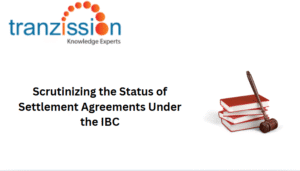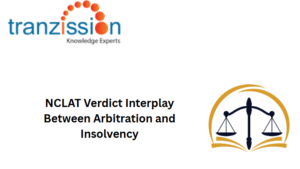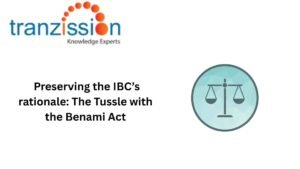
Constitution of Committee of Creditors under Section 21 of IBC
Table of Contents
There are several stakeholders involved in making the resolution process effective, including the Committee of Creditors under Section 21 of IBC. The CoC has a crucial role in the outcome of the proceedings, their decisions determine the revival or liquidation of the distressed companies. The Insolvency and Bankruptcy Code, 2016 (IBC) governs the formation of the CoC, what their responsibilities are, and the details of the meetings. This article delves into what the CoC is and its constitution.
Understanding Section 21 of IBC
Creditors under Section 21 of IBC establishes the CoC for a corpraote debtor, which can be understood in detail with the following points:
Definition of Committee of Creditors:
The CoC is a collective body of financial creditors constituted during CIRP to represent creditors’ interests. It is the decision-making body in the corporate insolvency resolution process (CIRP) and its constitution is governed by Creditors under Section 21 of IBC The CoC makes a crucial decision on approving a viable resolution plan that may revive the corporate debtor or may decide to liquidate it.
Objectives of the CoC:
According to IBC provisions, the objectives of the Creditors under Section 21 of IBC are to maximise the value of assets for stakeholders to evaluate and approve the resolution plan that protects the interests of all stakeholders. It aims for a timely and efficient resolution process, making informed commercial decisions to revive a struggling company or liquidate its assets.
Read more : Section 30 of IBC – Insolvency and Bankruptcy Code, 2016
Constitution of the Committee of Creditors
The constitution listed under Creditors under Section 21 of IBC:
Role of the Interim Resolution Professional:
The interim resolution professional (IRP), after the collation of all claims received against the corporate debtor and determining the financial position, constitutes the Creditors under Section 21 of IBC. It essentially acts as the facilitator to bring all the creditors to form the decision-making body during the CIRP. The IRP categorizes creditors as financial or operational creditors and prepares the list of financial creditors eligible for inclusion in the CoC.
Composition of the CoC:
Creditors under Section 21 of IBC states that the CoC comprises of all financial creditors of the corporate debtor, providing that they are not a related party to the debtor. If the debtor has no financial creditors, then the CoC is constituted with financial creditors.
Voting Rights in the CoC:
Where the corporate debtor owes financial debts to two or more financial creditors as part of a consortium or agreement, each such financial creditor shall be part of the CoC and their voting share shall be determined based on the financial debts owed to them. Hence, the voting rights voting shares are proportional to the amount of financial debt owed to each creditor. The CoC may approve a resolution plan by a vote of not less than 66% of the voting share of the financial creditors, while certain decisions require a 51% majority.
Read more : Section 81 of IBC – Insolvency and Bankruptcy Code, 2016
Key Features of Section 21
Upon reading section 21 of the IBC, the key features include:
Exclusion of Related Parties:
The provisos of section 21(2) clarify that any financial creditors who are related parties of the corporate debtor are not included in the CoC. The reasoning behind this is to avoid any conflicts of interest and ensure impartial decision-making.
Rights of Operational Creditors:
The operational creditors have a limited role in the CoC. The operational creditors can participate in the meetings of the CoC if the aggregate debt owed to them exceeds 10% of the total debt. It is constantly criticized that this type of creditor does not have any voting rights in the meetings, meaning they have no role in the resolution plan.
Powers and Responsibilities of the CoC:
The CoC holds significant power in the CIRP, including the evaluation and approval of a resolution plan for a distressed company, the appointment or replacement of the resolution plan (RP), essentially has a crucial role in deciding the future course of action.
Judicial Interpretations of Section 21
The Hon’ble Supreme Court in Swiss Ribbons v. Union of India observed the importance of the CoC’s commercial wisdom and its role as the decision-making body under the IBC. This judgment also upheld the constitutionality of the IBC, emphasising the importance of balancing the interests of all stakeholders in insolvency proceedings. In Pioneer Urban Land and Infrastructure v. Union of India, the Supreme Court held that the “allottees”, the homebuyers, should be considered financial creditors under the IBC, thereby granting them representation in the CoC. The NCLT, in IDBI Bank Limited v. Jaypee Infratech Limited, held that the CoC has the final decision on which resolution plan to accept.
Challenges in Constituting the CoC
Some challenges in constituting the CoC under the IBC include:
Verification of Claims:
The IRP is required to meticulously scrutinise each creditor’s claim for accuracy and legitimacy. They have to ensure all claims are properly evaluated before the CoC can be formed, which can be complex due to potential disputes over claim amounts, documentation issues, and time constraints.
Role of Operational Creditors:
Operational creditors are typically excluded from the CoC, meaning they have no voting rights in the CoC unless there are no financial creditors present. Hence, their role in the company’s operations is often not adequately represented in key decision-making during CIRP, which may lead to imbalances in the process.
Delays in Formation:
There may be procedural irregularities or administrative issues that delay the formation of the Coc. Certain disputes may arise due to the classification of creditors, verification of claims, and related legal proceedings.
Recommendations for Strengthening the CoC Framework
To reduce the challenges faced when constituting the CoC, these recommendations may be implemented by the Insolvency and Bankruptcy Board of India (IBBI):
Enhancing Representation of Operational Creditors:
It is recommended to grant voting rights to operational creditors, even if the corporate debtor has financial creditors, to ensure their interests are represented fairly.
Streamlining Claim Verification:
The IRP can adopt advanced technological tools, such as blockchain or data analysis, to streamline claim verification and reduce delays.
Increasing Transparency:
It is suggested to introduce measures to improve transparency in CoC decision-making, such as publishing meeting minutes and voting records
Capacity Building for IRPs and RPs:
The IBBI can establish certain training programs for IRPs and resolution professionals to enhance the capacity of insolvency professionals in managing complex CoC-related issues.
The Way Forward for CoC Under Section 21
To ensure fair representation of all stakeholders, including operational creditors, transparency, and efficiency of the resolution process, there is a need for continuous refinement of section 21 of the IBC. The objectives of the current insolvency framework in India include safeguarding the interests of the stakeholders and establishing time-bound mechanisms. The statutory and procedural challenges make it difficult to fulfill these objectives. Hence, it becomes important to maintain the CoC’s balance of power.
Conclusion
The process of the CoC is outlined under section 21 of the IBC, which is a key decision-making body during CIRP. The CoC determines who can participate in the CoC and how their voting power is calculated. It is a crucial aspect being the exclusion of “related parties” to avoid conflicts of interest during the resolution process. By excluding related parties from the CoC, section 21 aims to ensure that the insolvency process if fair and transparent, protecting the interests of all creditors. However, operational creditors also have limited participation in the CoC meetings, making it difficult for these creditors to have their rights adequately represented. To address procedural irregularities, delays in the formation of the CoC, and other challenges, the IBBI should establish reforms to ensure fair representation and efficiency.





